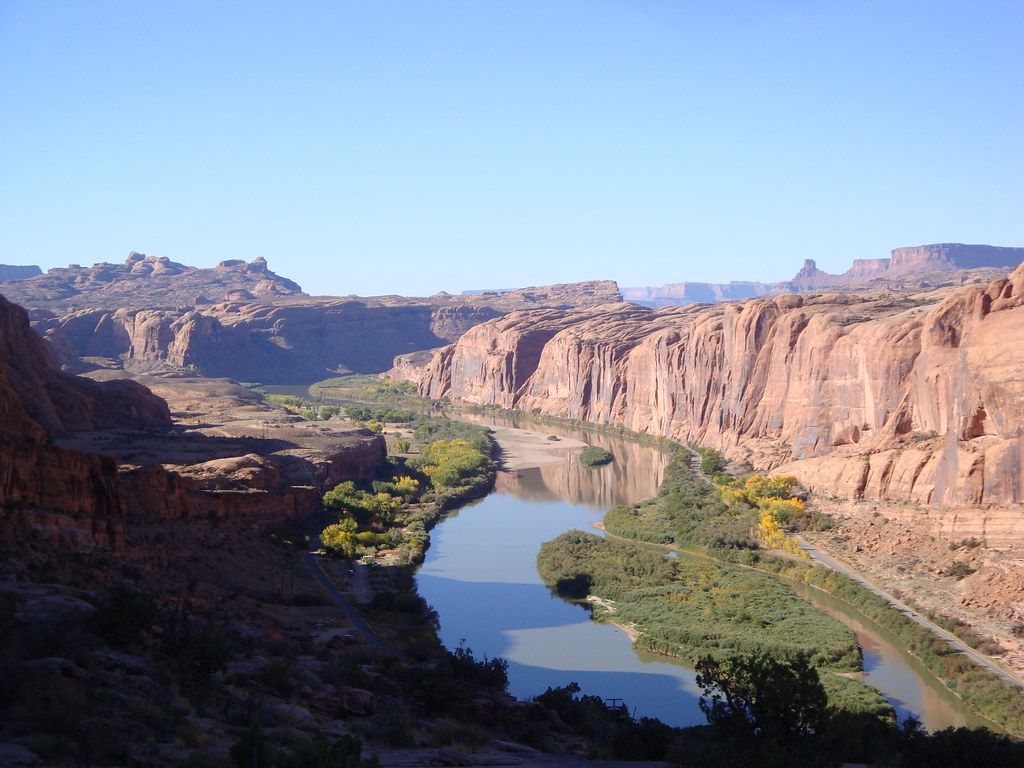Blog |
Discussing current issues in engineering
|
|
Water scarcity in the American West has historically been a contentious issue. In order to address growing water demands throughout a region with unpredictable precipitation, pressure was put on the federal government to take responsibility for storage and irrigation projects. The first half of the 1900’s saw major changes in water resource availability as the Reclamation Act of 1902 was passed by Congress. Within the Department of Interior, the United States Bureau of Reclamation, initially was created to study projects in water development within western states containing federal lands.
The concept of these water development projects was to “reclaim” the drought ridden lands to explicitly alleviate the burden of water shortages and amplify accessibility for human and agricultural use. The Colorado River, a focal point in the American West, has held a mystical and wild air for centuries. Subject to both erratic behavior and seasonal, predictable, cyclical periods of drought and flooding, the river is made up of a vast network of tributaries. Throughout the complex web of water are a number of control mechanisms primarily in the form of dams (i.e. The Hoover Dam). These massive feats of engineering efforts to provide water security were successful, instigating a shift from construction to operation and maintenance. Fast forward to 2021, and we are facing climate crisis and unprecedented resource challenges. Although the current and revised mission of Reclamation is to "manage, develop, and protect water and related resources in an environmentally and economically sound manner in the interest of the American public", it was originally stated by Reclamation that “the arid West essentially has been reclaimed. The major rivers have been harnessed and facilities are in place or are being completed to meet the most pressing current water demands and those of the immediate future." Spanning 7 states almost 250,000 square miles, the Colorado River and surrounding watershed supports the livelihoods of nearly 40 million Americans. Facing incredible insistence, Reclamation solved the immediate water issues in the beginning of the 20th century, however it’s shortsighted and anthropocentric goals were unsustainable for the water resources. Now these reservoirs that at one time saved the West are now fast deteriorating to such low levels the massive hydroelectric power generators in dams are unable to spin. Massive water restrictions on the horizon, it is the latest undertaking of modern engineering to again provide savior to the desperate state of the American West’s water resources. Stakeholders are tasked with fulfilling the social planning goals that were inadvertently overlooked from Reclamation’s initial mission. Retrofitting the awe-inspiring architecture along the Colorado River is not entirely feasible, however, the structured creativity of engineering opens new solution avenues. Contingency plans are now common documents for municipalities, their governing bodies, and stakeholders. Offering an opportunity to explore and expand demand management techniques, drought contingency plans suggest collaborative efforts to enhance mechanisms controlling water resource growth planning, and address water needs across multiple regions. Among these suggestions are updating municipal development codes with water-smart parameters, expanding water market transactions to facilitate increased engagement between municipalities, and establishing an atlas of collaborative frameworks for environmental organizations, engineers, and other shareholders. The Water SMART Program is also one of the latest mitigation efforts put forth by Reclamation. The Program combines funding for subprograms aimed at tackling improvement projects related to water resources. Water recycling and reuse projects are at the top of the funding list through the Program. Participants are also able to apply for grants to make efficiency improvements to water and energy infrastructure. Additional consideration is given to those applying with projects addressing improvements to water delivery systems. For example, engineering projects include improving canal lining and piping to reduce seepage loss, installing advanced metering systems, updating and automating water gates where necessary, implementing supervisory control and data acquisition systems to improve water management, and introducing new residential water meters. Through collaborative, sustainable planning, and responsible engineering , water reliability can be recaptured in the American West. Citations: Booth, M. (2021, July 13). The Colorado river is drying up faster than federal officials can keep track. Mandatory water cuts are looming. The Colorado Sun. https://coloradosun.com/2021/07/13/drought-drains-colorado-river-reservoirs-faster/. Soeth, P. (2021, March 17). Projects throughout the Western United States receive $42.4 million in grants from Reclamation to conserve and use water more efficiently. News & Multimedia. https://www.usbr.gov/newsroom/#/news-release/3794. Soeth, P. (2021, August 5). Reclamation invests in grants to increase water sustainability in the West. News & Media. https://www.usbr.gov/newsroom/#/news-release/3794. Summitt, A. (2013). Conquering the Wild Colorado: The River before 1945. In Contested Waters: An Environmental History of the Colorado River (pp. 3-30). Boulder, Colorado: University Press of Colorado. Retrieved August 19, 2021, from http://www.jstor.org/stable/j.ctt4cgjp3.5 Tuser, C. (2021, August 18). Bureau of Reclamation Announces FIRST-EVER water shortage in Lake MEAD, Colorado River. Water & Wastes Digest. https://www.wwdmag.com/one-water/bureau-reclamation-announces-first-ever-water-shortage-lake-mead-colorado-river. U.S. Congressional Research Service. Bureau of Reclamation: FY2021 Appropriations (F11465; Jan. 8, 2021) ,by Unknown. Text pdf: https://crsreports.congress.gov/product/pdf/IF/IF11465. |
Colman Engineering, PLCA professional engineering firm located in Harrisonburg, VA Archives
January 2022
|


 RSS Feed
RSS Feed
